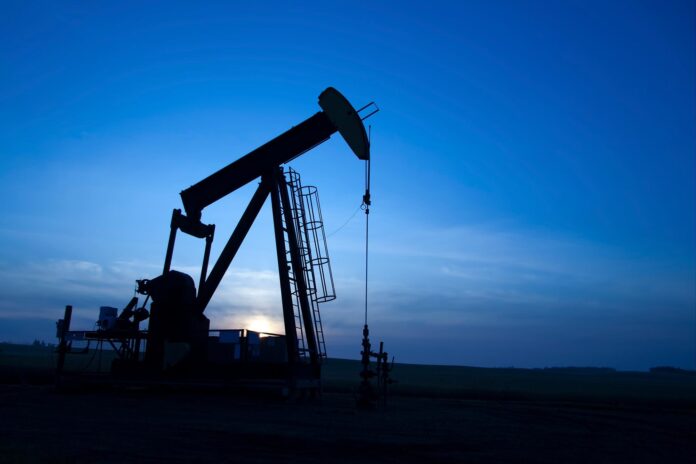Policy makers are often keen to glance at old documents; these archives help them identify two major indicators of progress and bottlenecks. A glance at a published USAID report of 1982 states: “Although Pakistani exports have increased over the years, the country continues to suffer from chronic trade deficits, and it remains heavily dependent on imported petroleum products.” In 2022, this is grim reading for policy enthusiasts– no progress. Nothing seems to have changed except for the year. Considering this predicament, the recent Russian-fueled war in Ukraine has come at a perilous time for a country that has for long lived beyond its means and refused to mend its ways. With soaring oil prices, the common man is shrouded in anxiety: what is going to happen next? A comprehensive analysis of the world markets is the need of the hour.
To start with the basics: Russia is one of the world’s largest oil producers and a key supplier of industrial metals such as nickel, aluminum, and palladium. It is also the dominant supplier of gas to Europe. As Western sanctions against the world’s 11th largest economy come to the fore, The Economist has predicted a shortage of 3 million barrels per day. The impact of these perceived shortages is already clear: the average price of crude oil in 2022 has been hovering around $101.20 per barrel as compared to $68.17 in 2021 and $39.68 in 2020 respectively, according to Macro Economic Insights. Experts have outlined a familiar upward trajectory of oil prices as the war in Ukraine rumbles on. Several factors are expected to shape which direction the wind blows from here in the crude oil market.
OPEC (Organization of Petroleum Exporting Countries) have not shown any willingness to bridge the gap between demand and supply. After all, petrostates are always waiting for their occasional heyday; their time may have come sooner than expected after Covid-19 ramped down oil sales and production. Predominantly, two countries have the capacity to meet the supply numbers required: Saudi Arabia and UAE. Thus far, both have been non-committal in promising to ramp up the production numbers.
A rigorous analysis of the oil markets presents an ominous sign for Pakistan. The country does not have the political or economic clout to do its own bidding: search for a cheaper alternative. In theory, Russia and Iran are options. In practice, they are only options for economic juggernauts such as China and India. For Pakistan, they can be nothing more than political soundbites.
However, there are always market signals worth noting. Such is the case of Libya, a smaller but significant oil supplier, that has been recently accused by some Western media outlets of “misrepresenting oil production figures” to create unnecessary volatility in the market. The OPEC countries seem in no hurry to engage in a rescue act.
The second factor will be America’s response. Domestically, inflation has caused spikes in federal interest rates; rising oil prices are becoming troublesome for the Democrats in the buildup to the midterm elections. The approval numbers of President Joe Biden are fast sinking– this could potentially lead to rapid action on the oil front. The President has already asked oil companies to push the pedal on their drilling and oil production capacities to help avert any future crises. Previously, America’s “Shale Oil Production” had helped offset minor shortages of oil. Shale oil is a high-quality crude oil that lies between layers of shale rock, and the USA has the biggest shale oil reserves in the world. Nevertheless, the production of shale oil has conventionally been more expensive than the extraction of conventional crude oil. Moreover, Biden’s campaign was based on the trillion-dollar “Green Deal”; a move to boost fracking and drilling would most certainly be accompanied with a steep political cost as climate change continues to be one of the most important electoral topics in the USA.
While relief from the supply side looks tricky, onlookers have hedged their bets on the demand side of the oil market. In this case, all eyes have been fixed on China. There are more audible whispers of the slowing down of the Chinese economy, and the country’s “Zero-Covid” policy is most certainly going to hinder growth. A slow economy constrained by a resurgent covid-19 will most certainly lead to reduced demand from one of the world’s biggest oil buyers. Worldwide recession is another factor that may come in to cap the unsurmountable rise in oil prices.
A rigorous analysis of the oil markets presents an ominous sign for Pakistan. The country does not have the political or economic clout to do its own bidding: search for a cheaper alternative. In theory, Russia and Iran are options. In practice, they are only options for economic juggernauts such as China and India. For Pakistan, they can be nothing more than political soundbites. The Western bulwark against Russia has led a country like Germany to stop operations on its Nord-Stream 2 pipeline. In such a situation, how can Pakistan– living on the ventilator of Western-backed borrowing– be allowed to openly engage with a global foe?
The policymakers in Pakistan need a strategic rethink; their alternative is simple: to go green. New climate change technologies and low-cost solar panels are the only way Pakistan can reduce its reliance on oil and gas. Indeed, the perennial balance of payments issue can only be solved by a predominant shift towards renewable energy. With a fragile economy, structural issues, borrowed foreign reserves and debt crisis, the picture is gloomy. Pakistan has been presented with a viable solution out of a double quagmire: climate change and oil dependence. If a paradigm shift is not realized sooner rather than later, policy makers will once again look at the reports of 2022 with the same regret.























